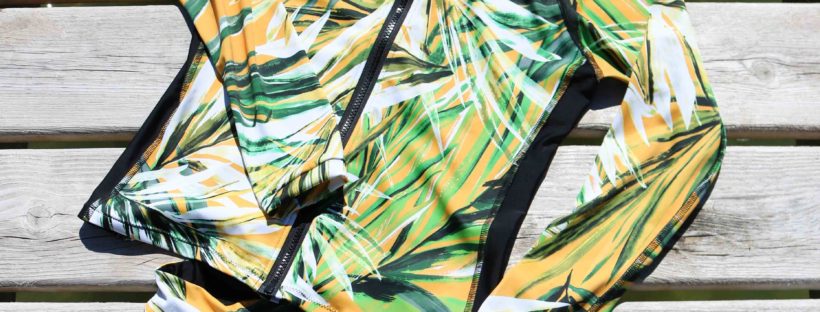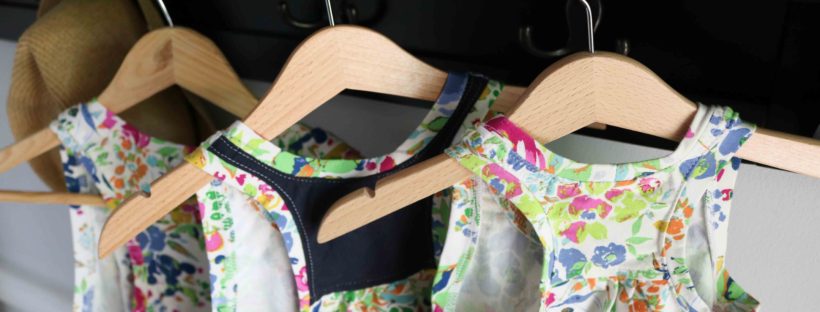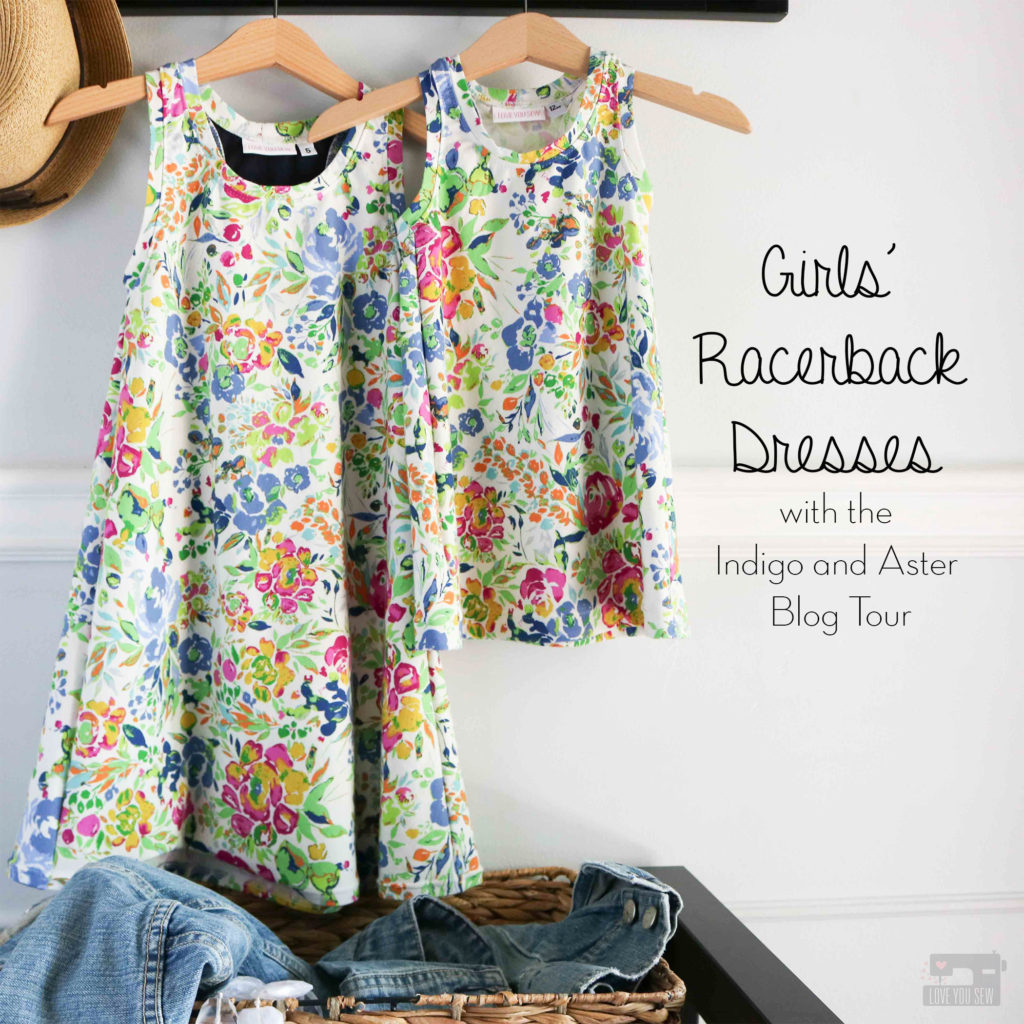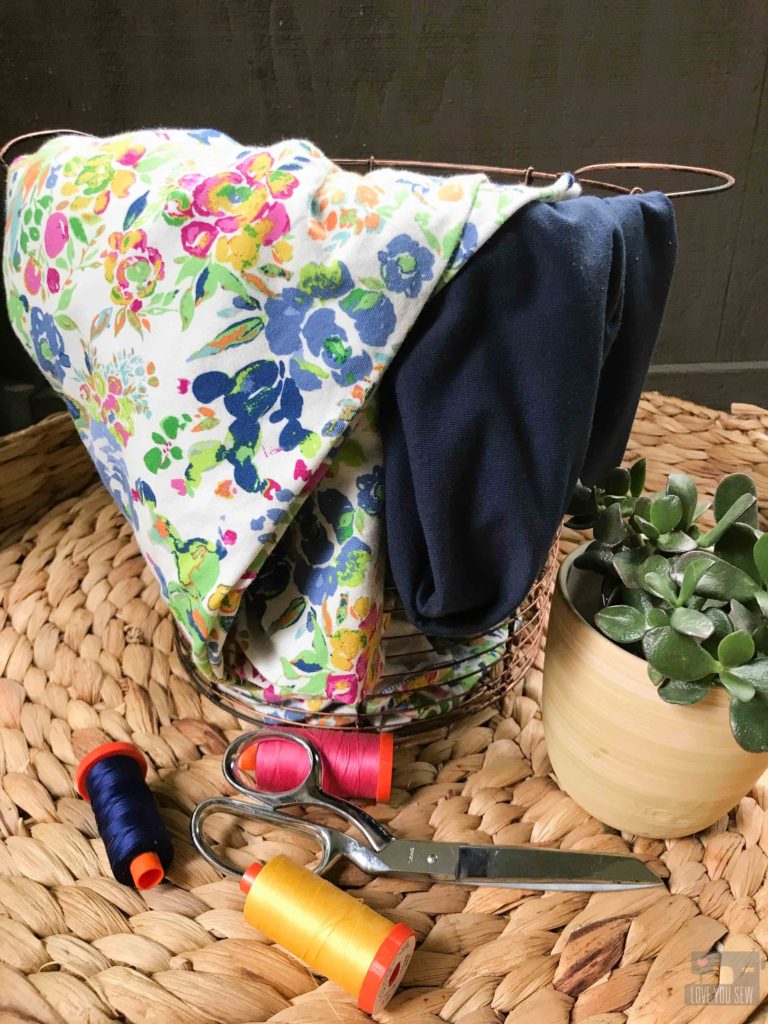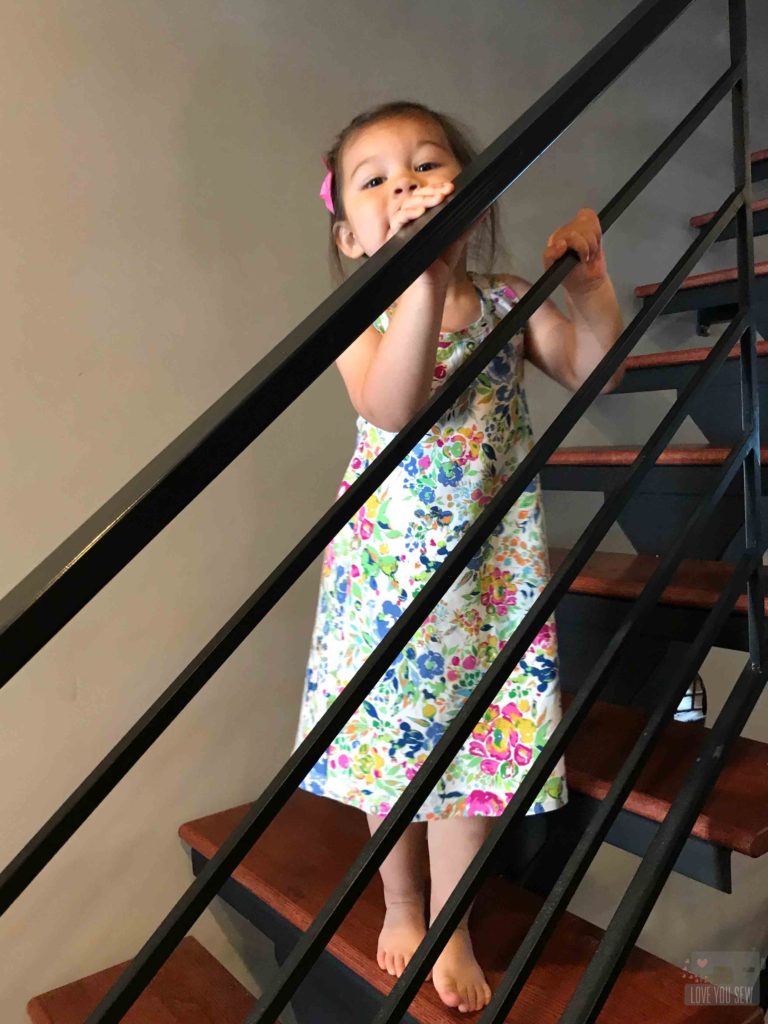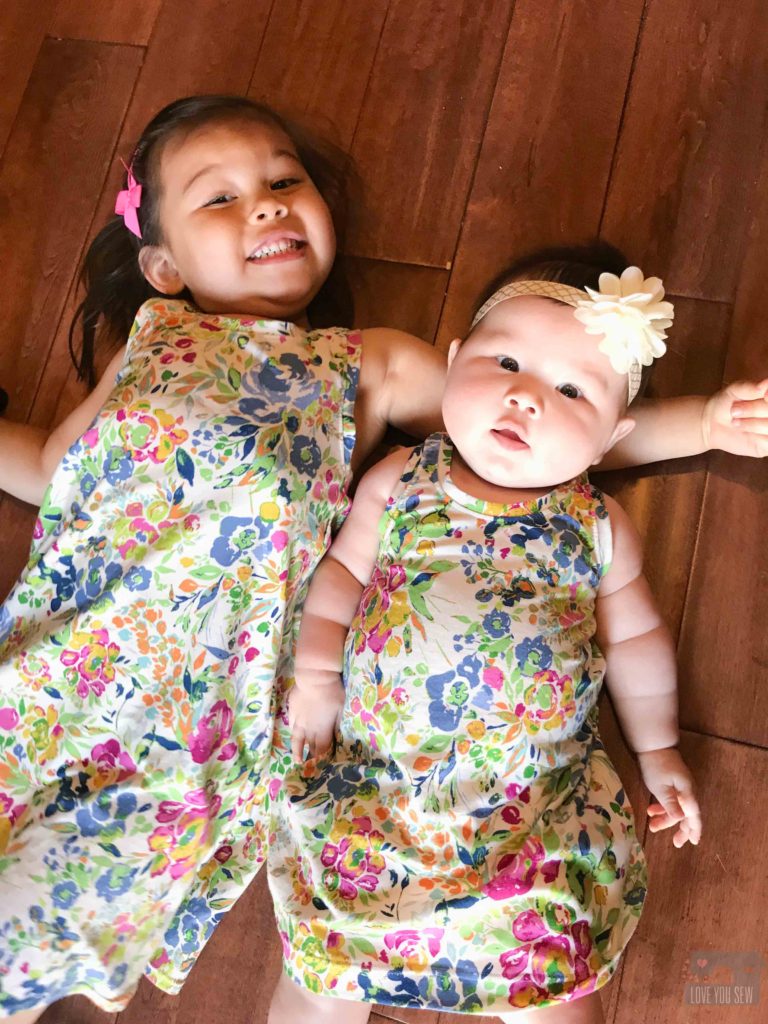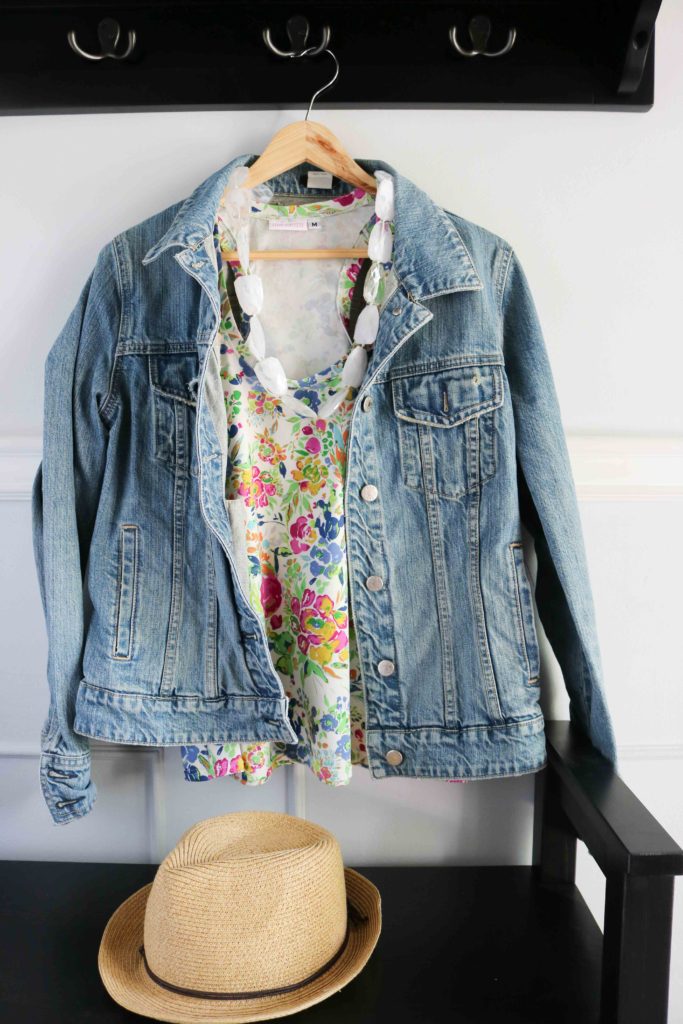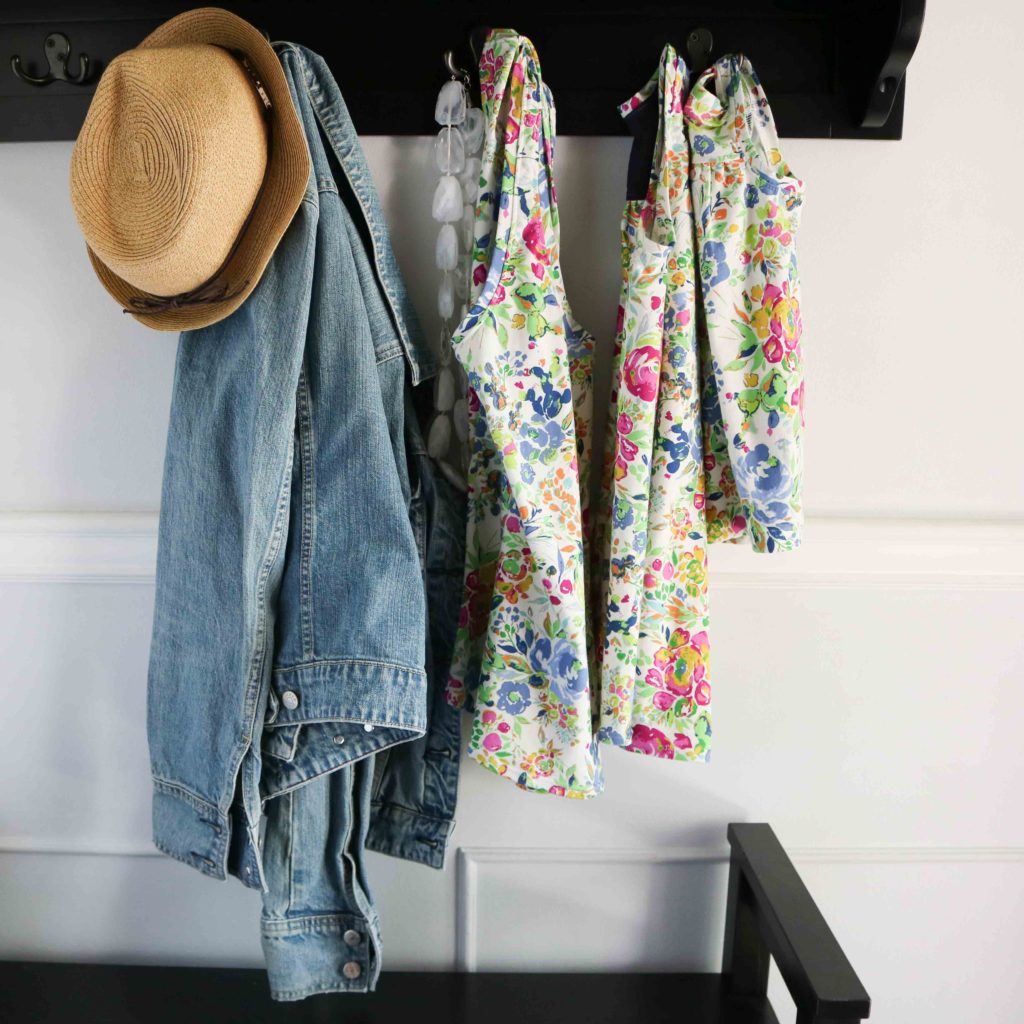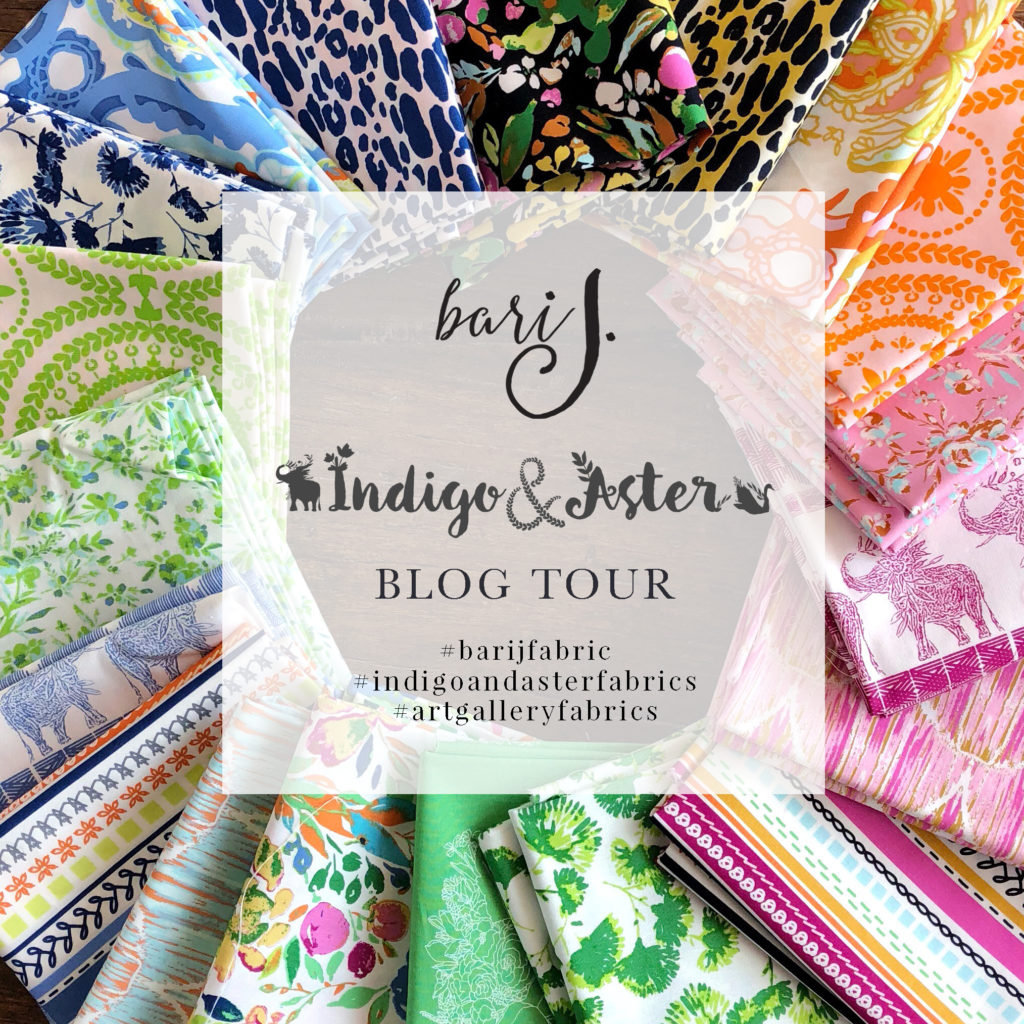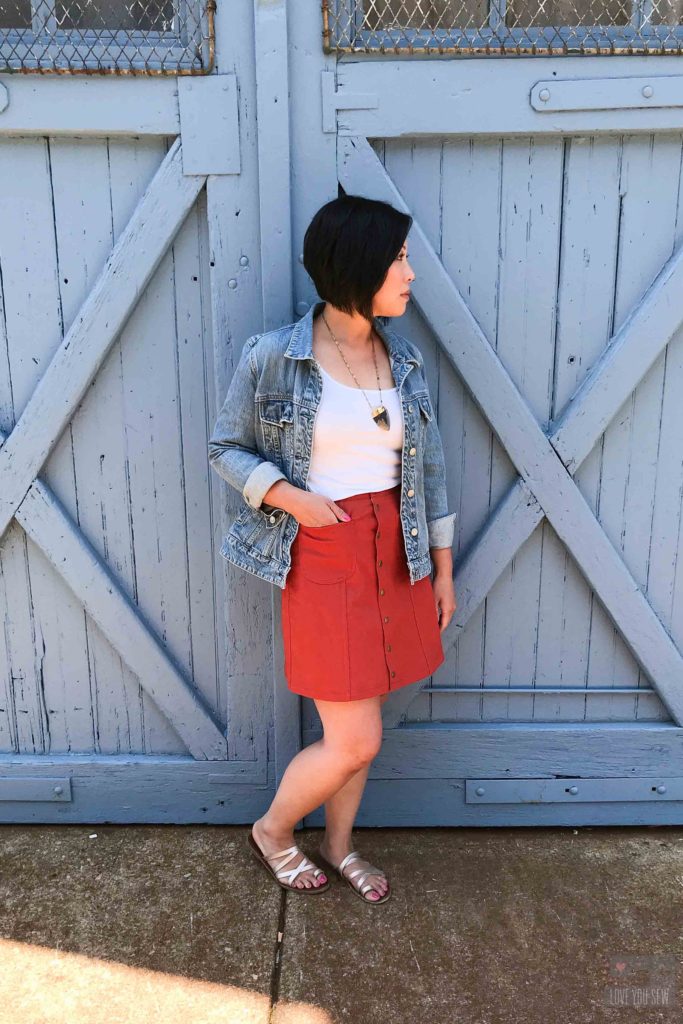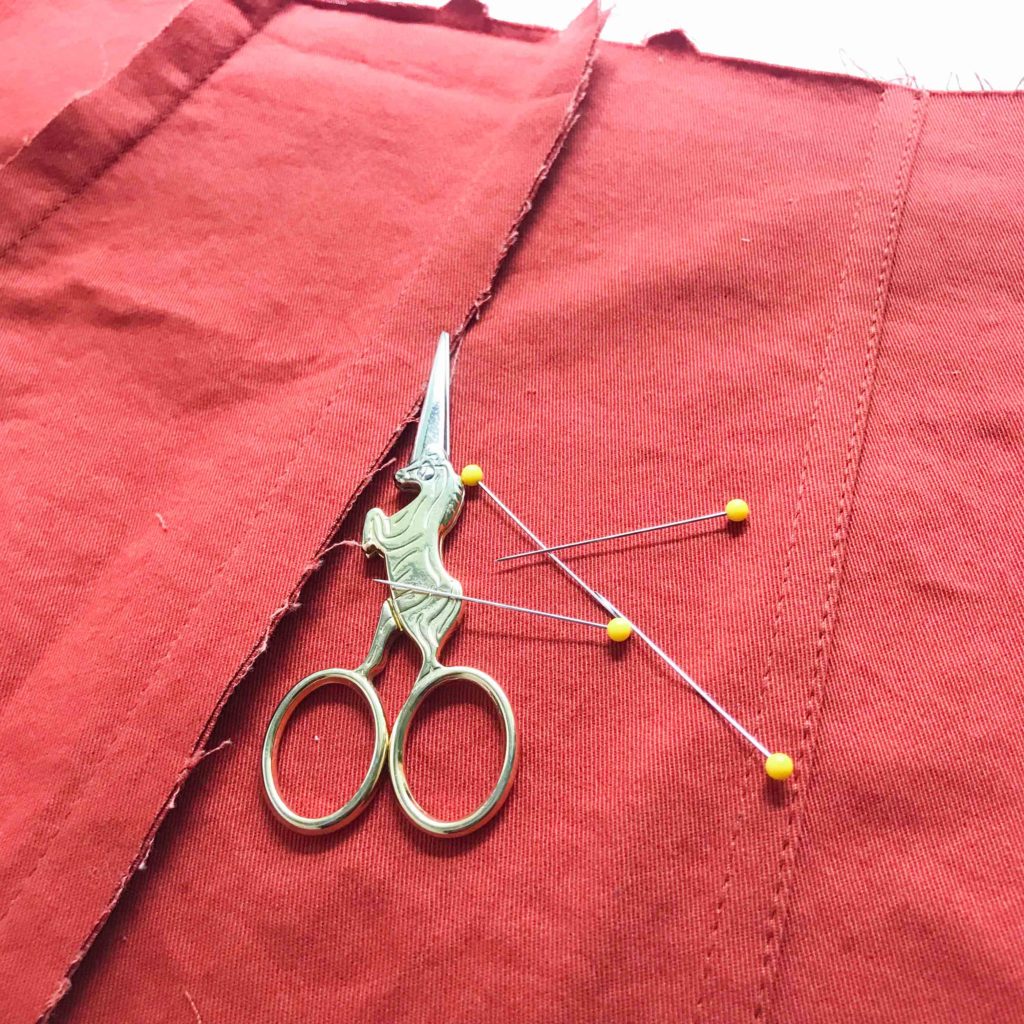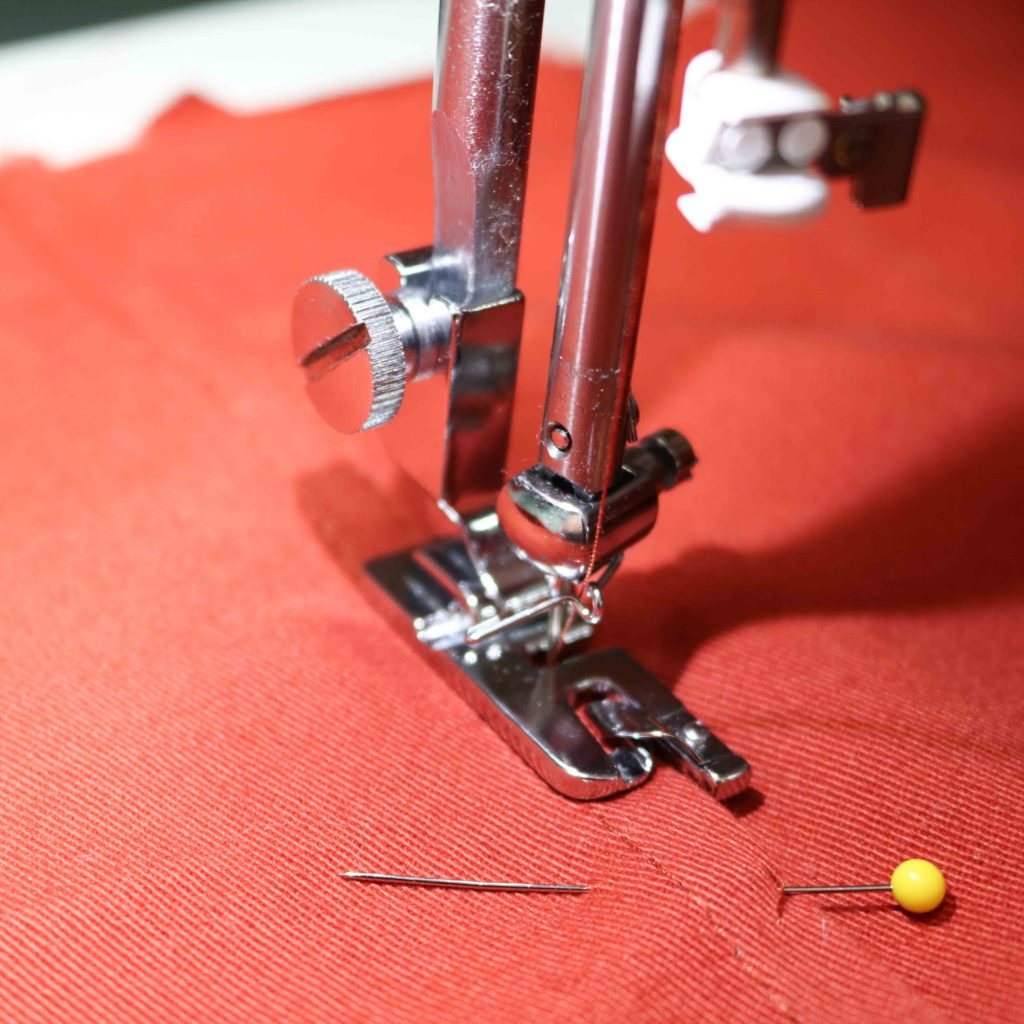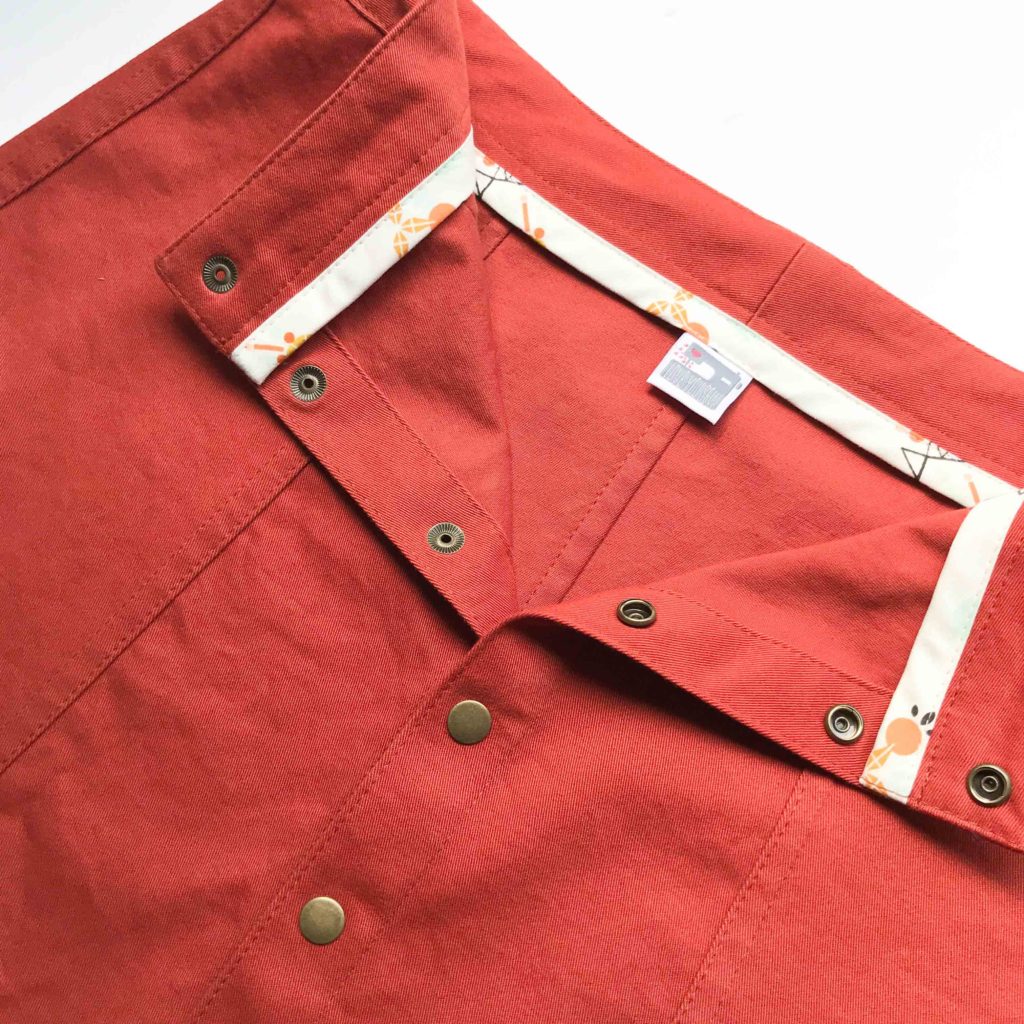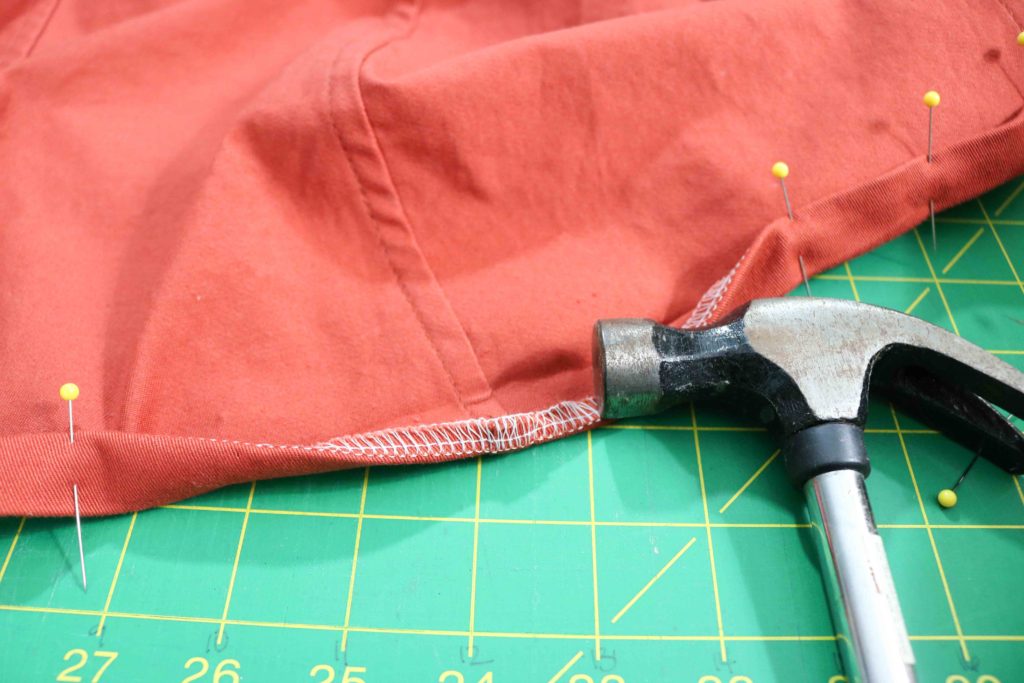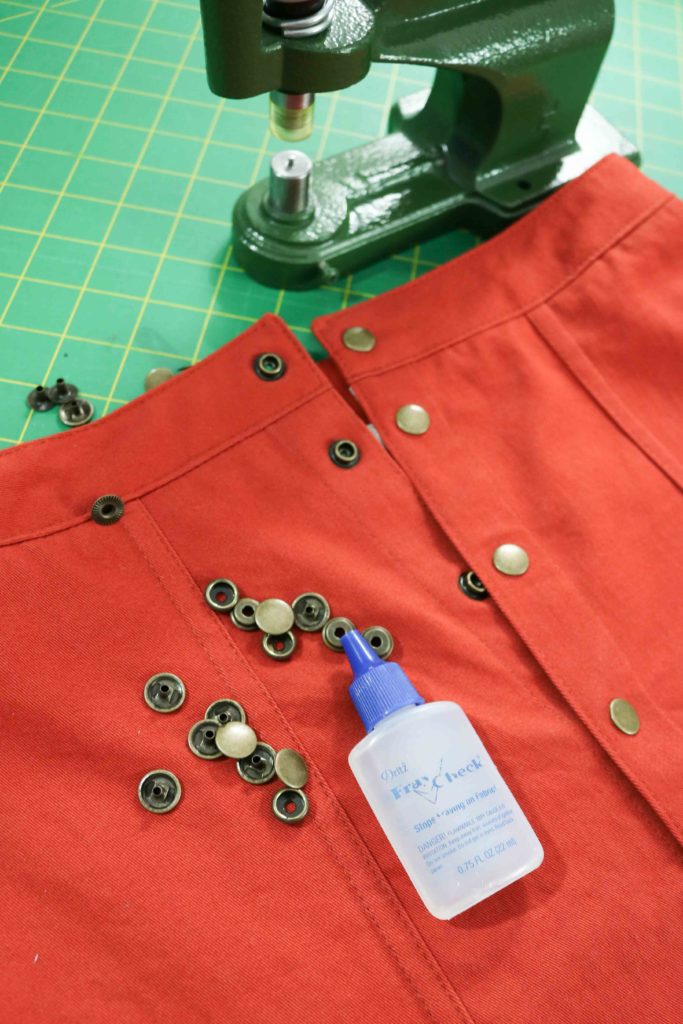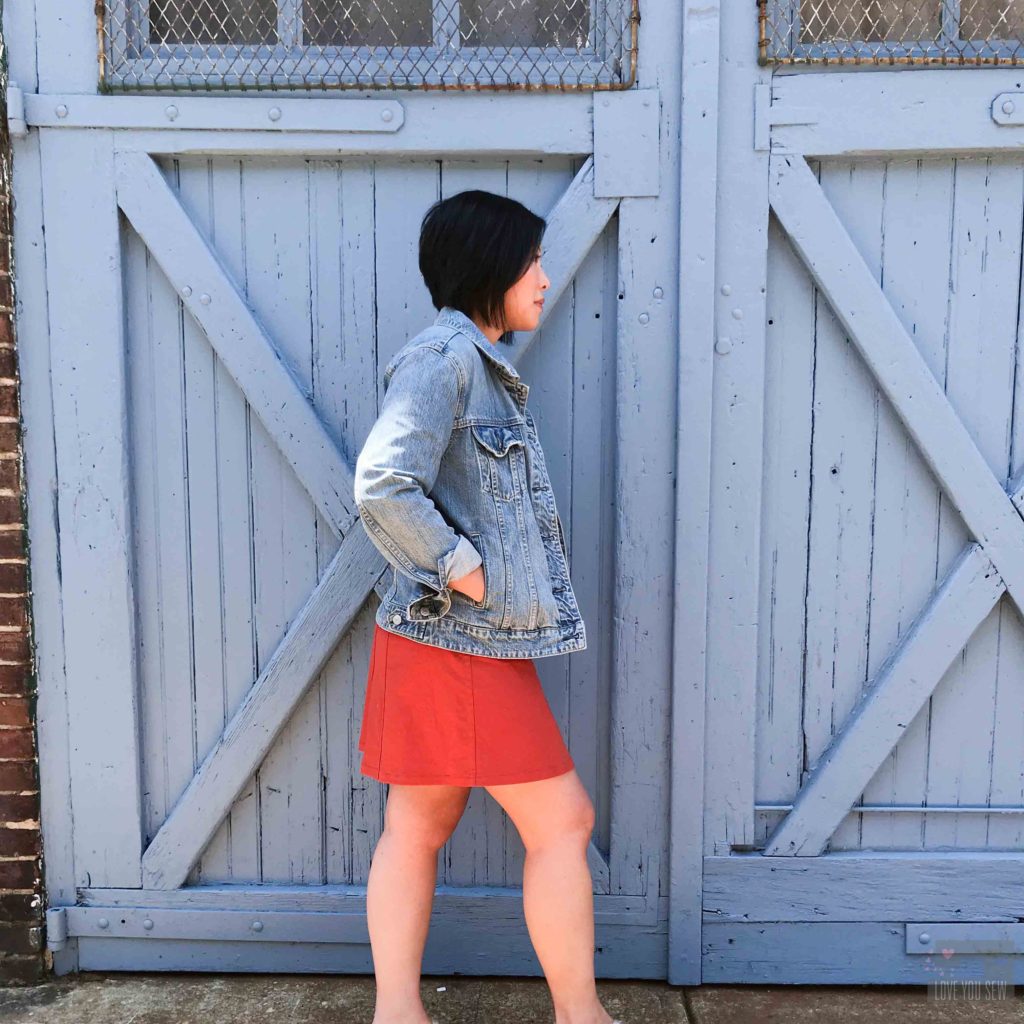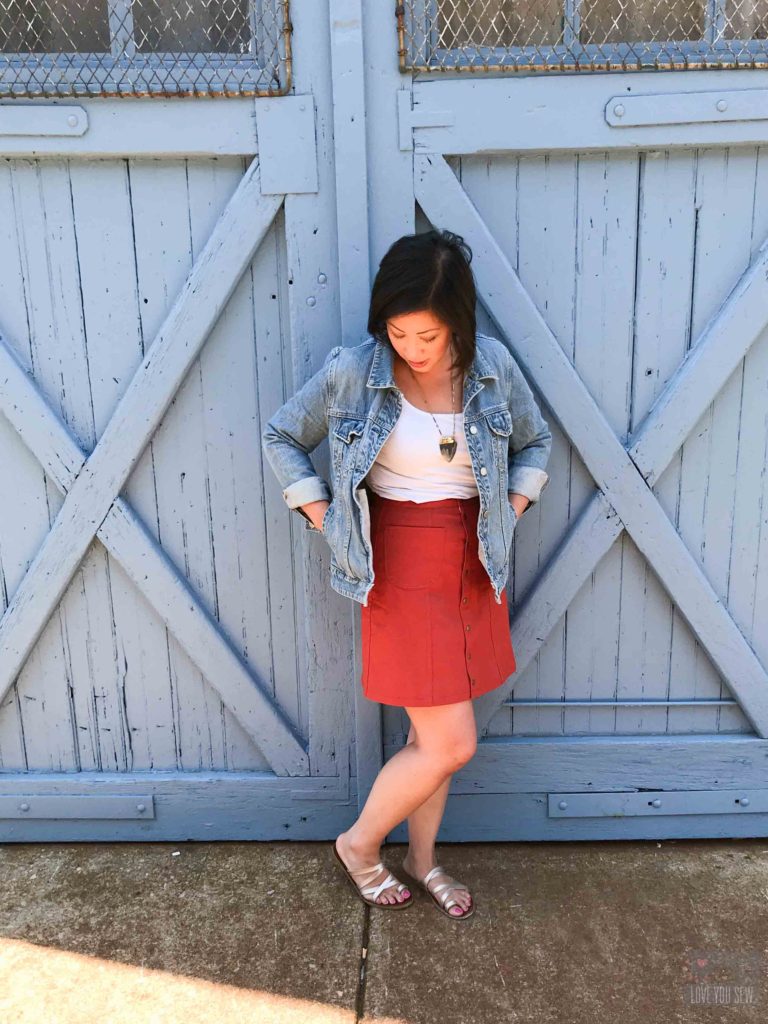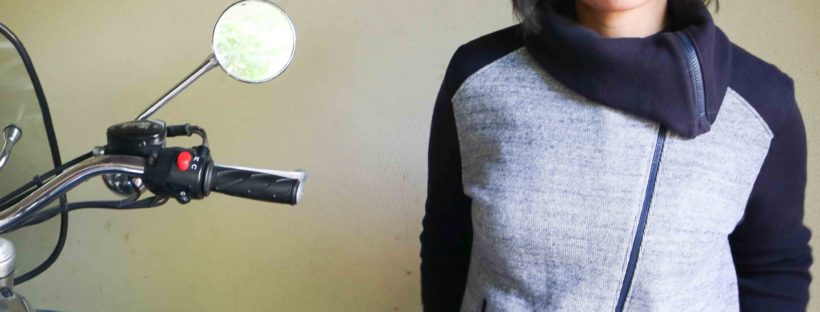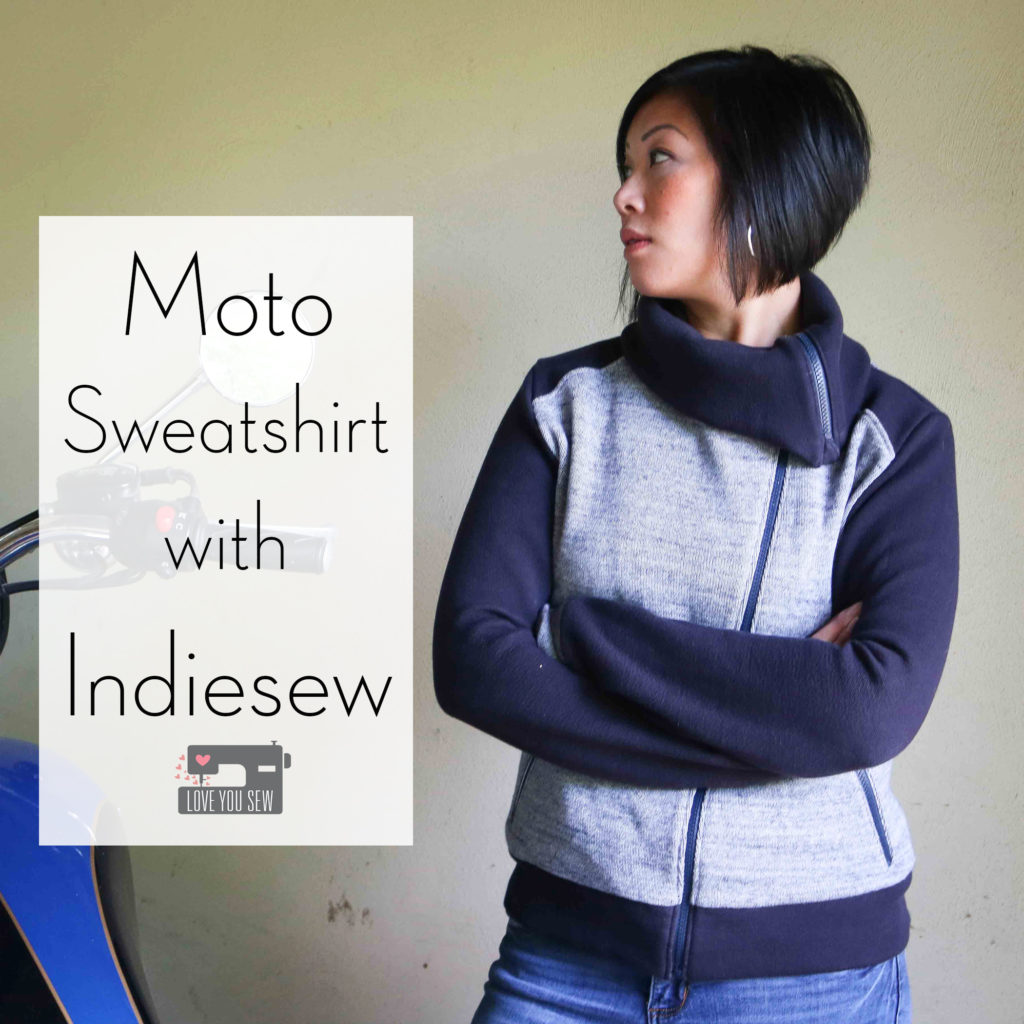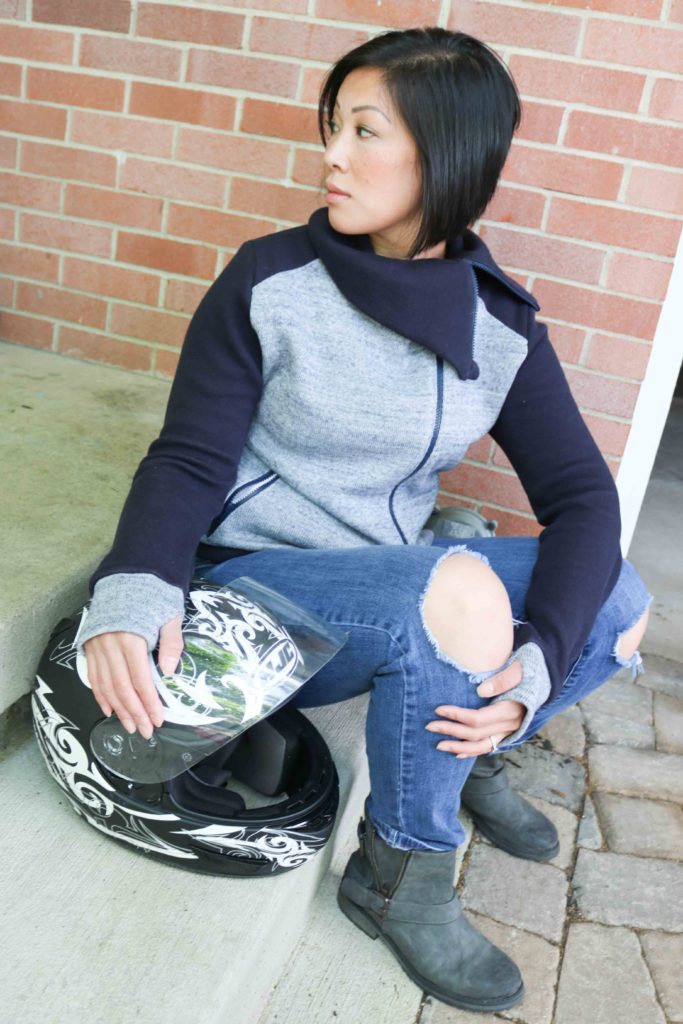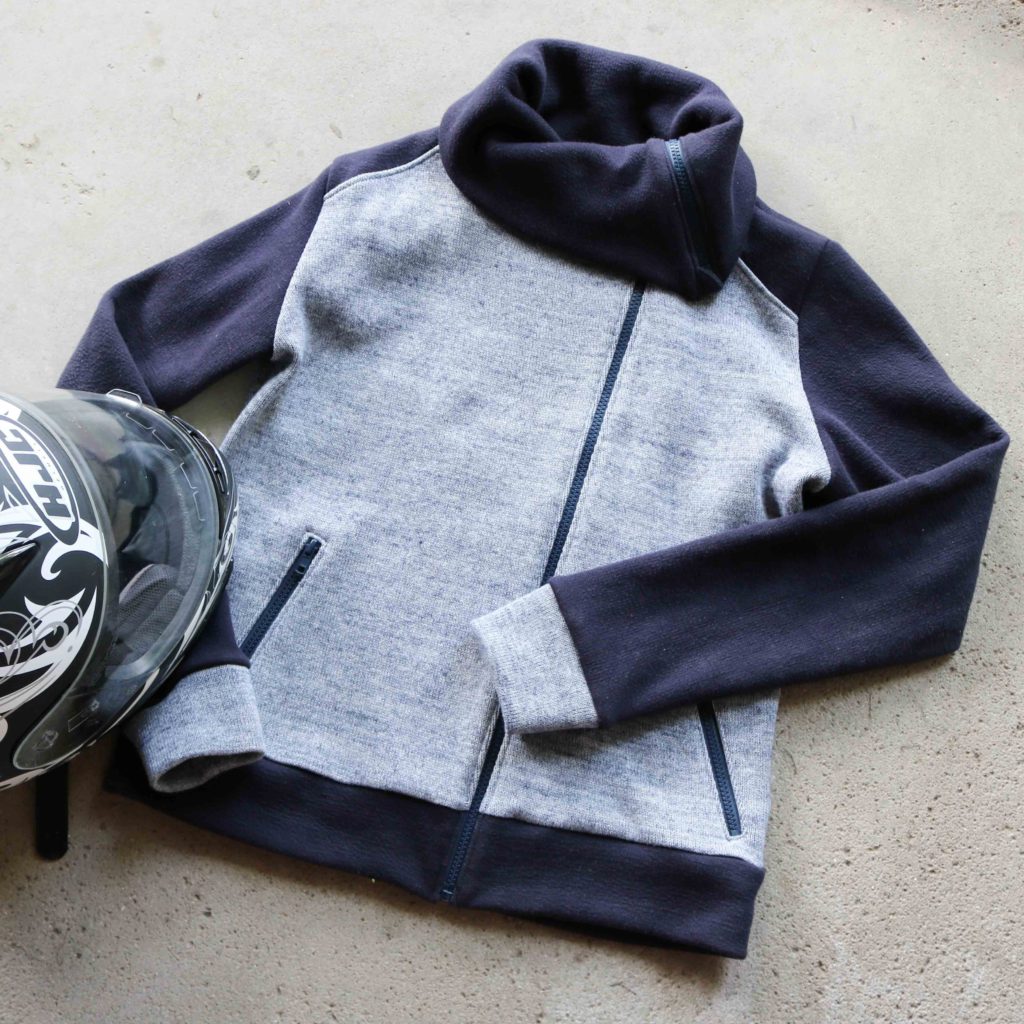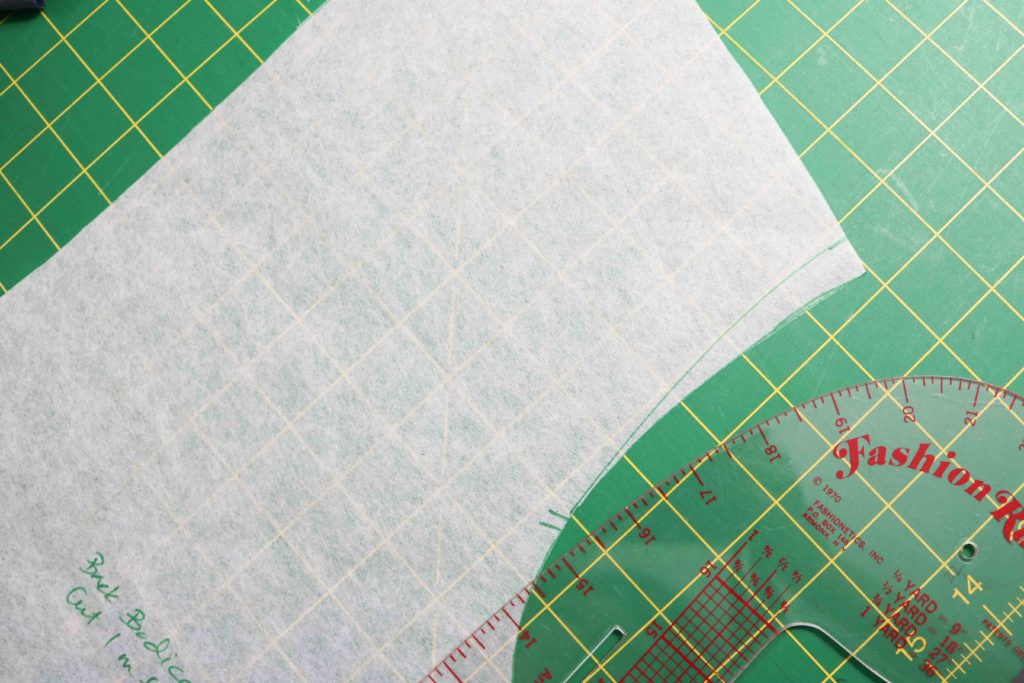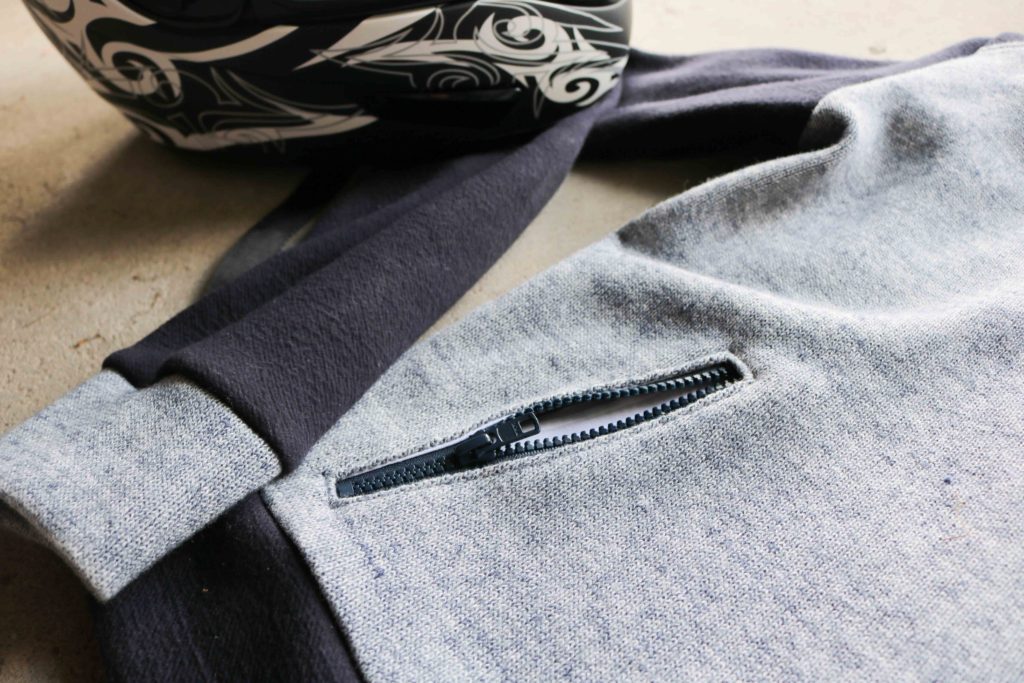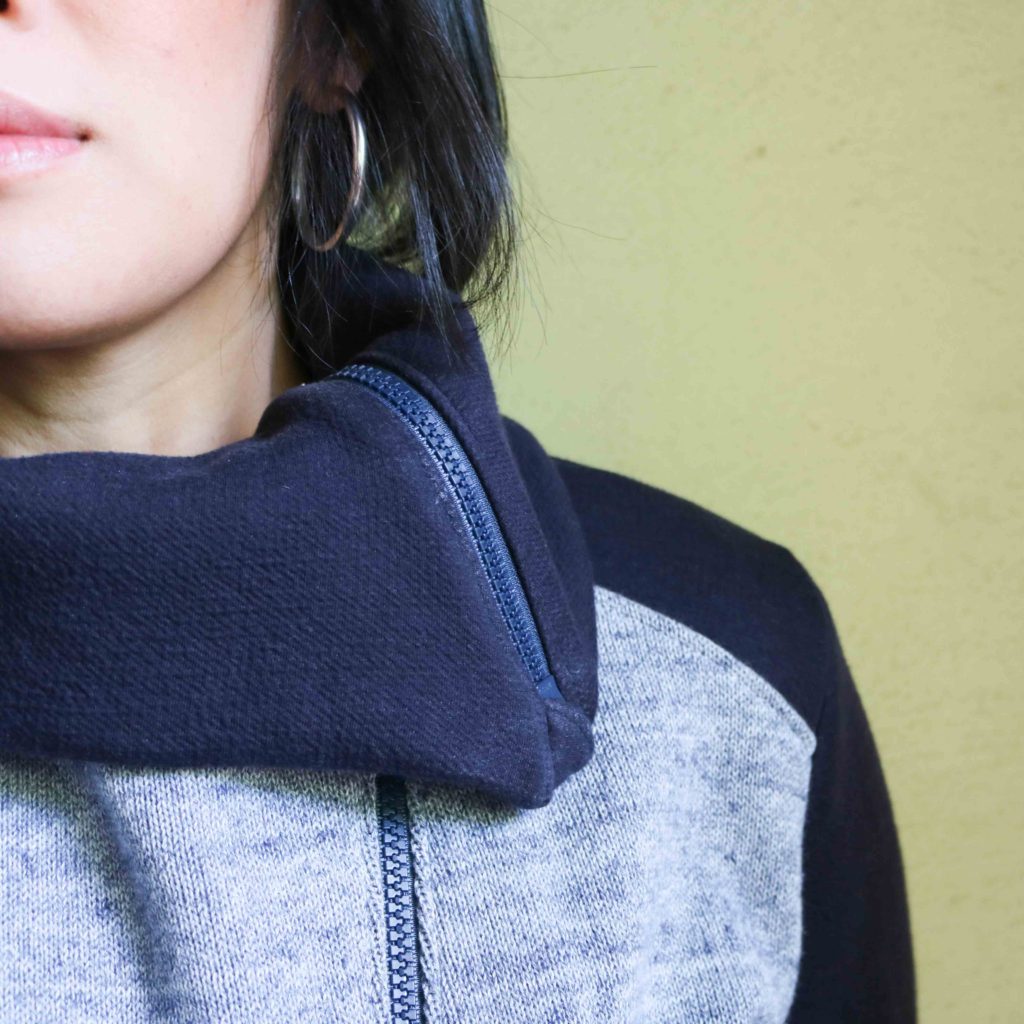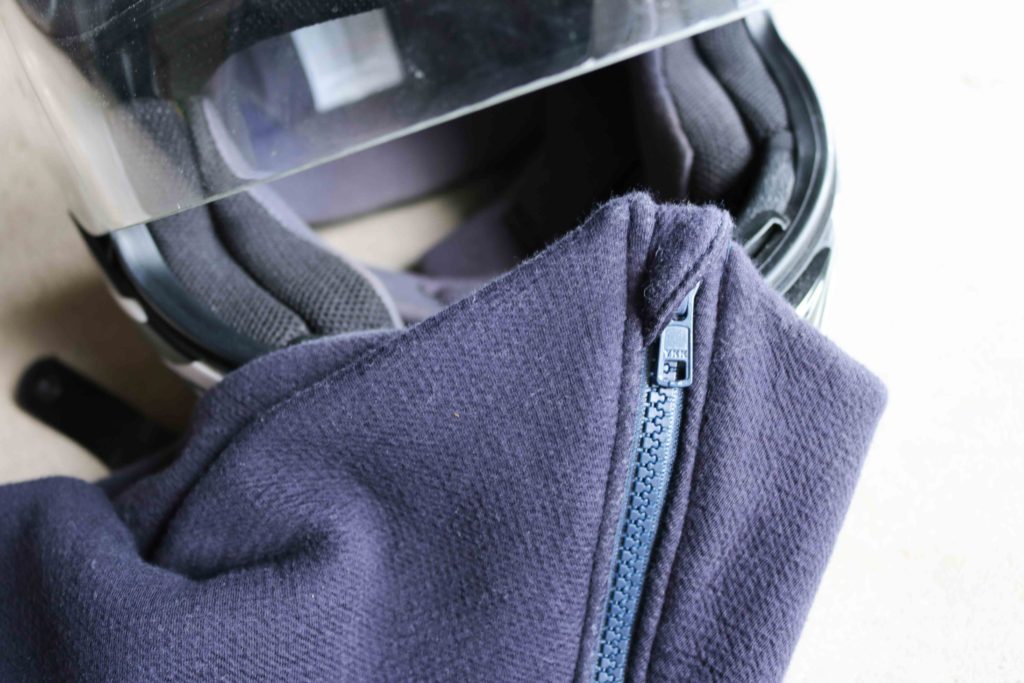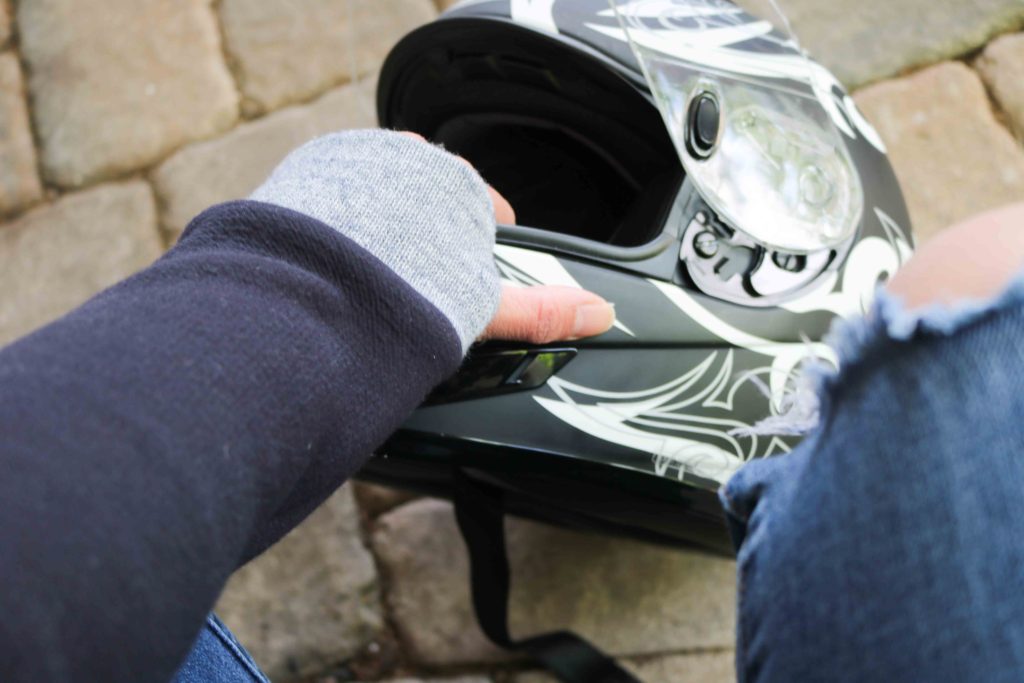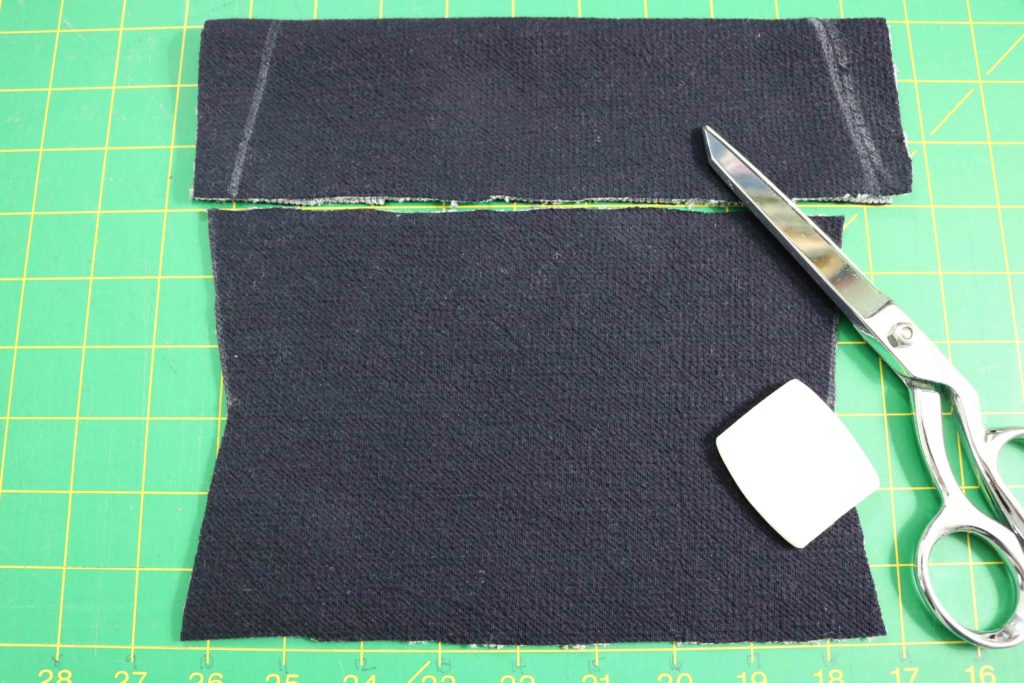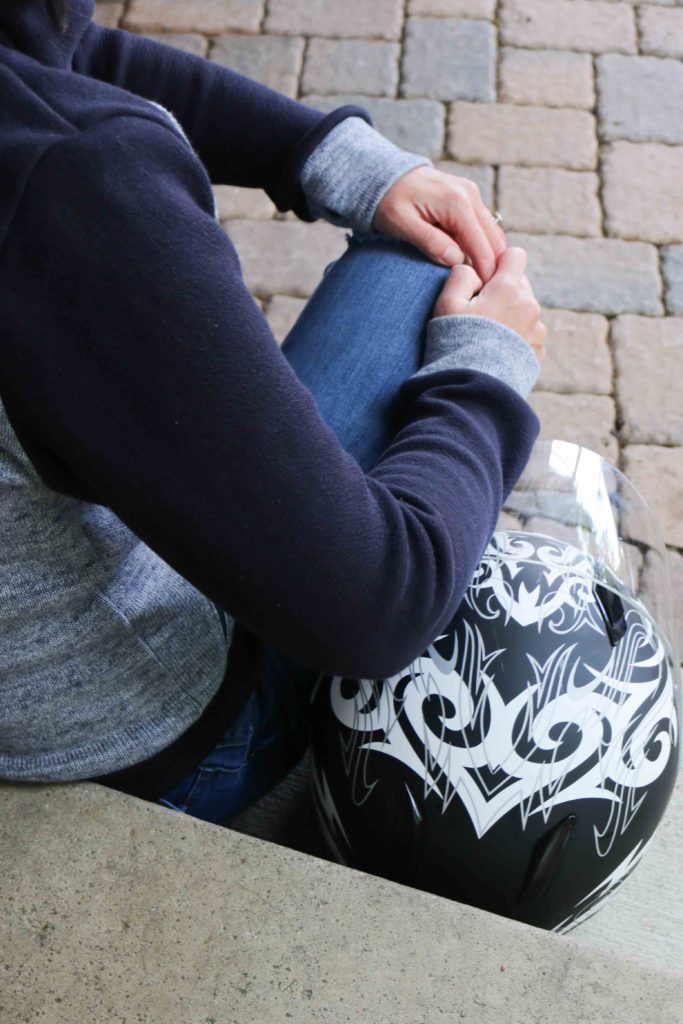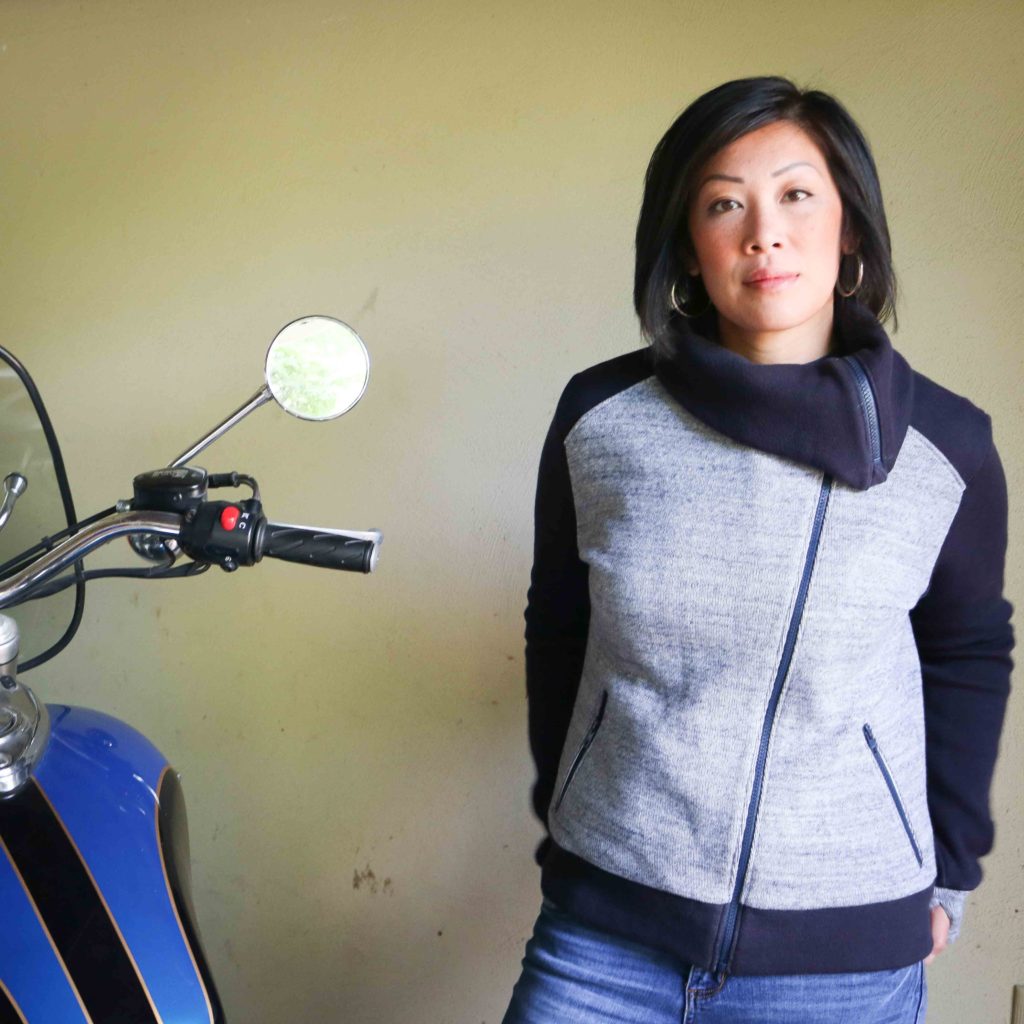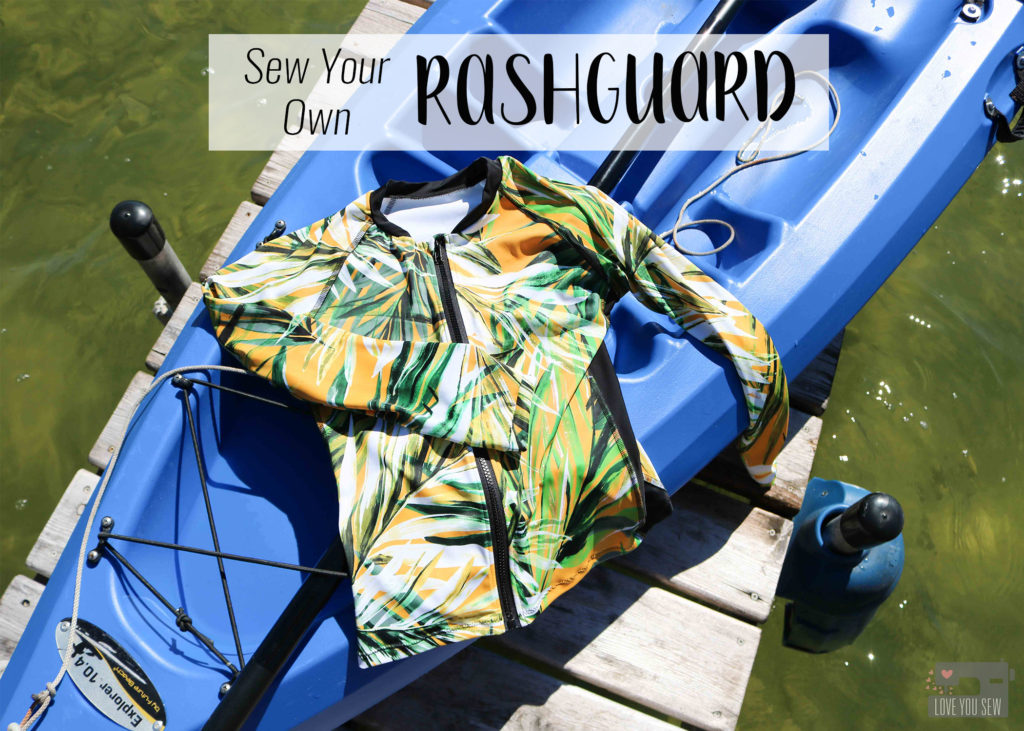
When I first started making my own clothes a few years ago, it was mainly because I was so frustrated with buying ready-to-wear for my new “mom-body.” All I wanted was just some easy separates that were cute, actually fit me, and worked with my lifestyle. Fast forward to the present and here I am with my first bathing suit! I never imagined I would have sewn one….let alone, show you all of my current “mom bod’ in said suit.
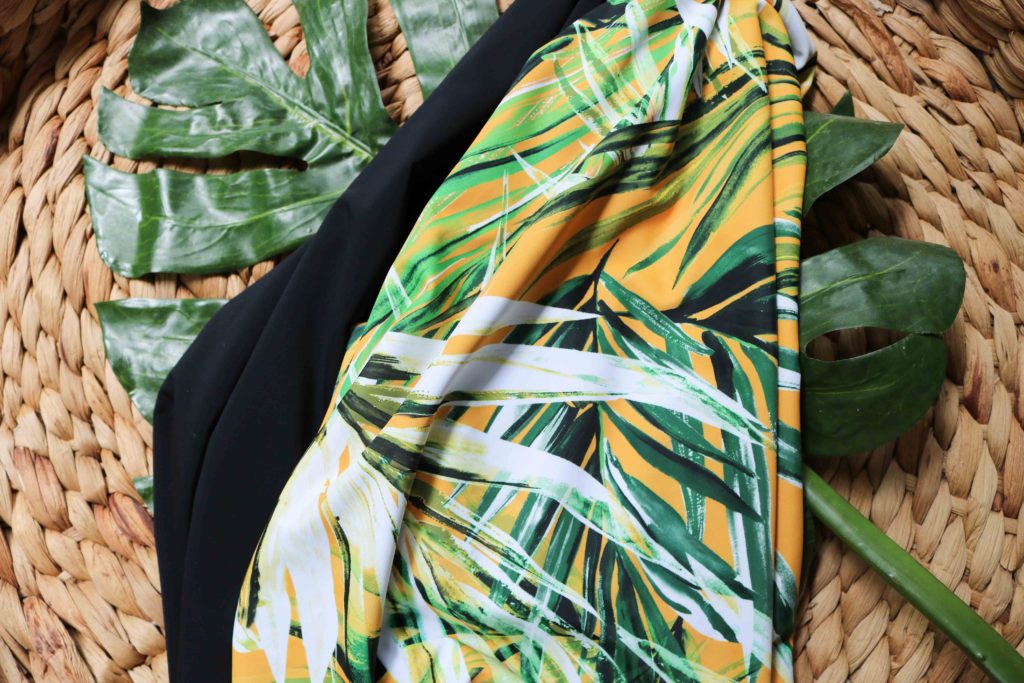
But sometimes, you are so inspired, that you just have to take the challenge and go for it. I was so impressed with all the DIY swimsuits on social media that I knew I had to eventually make something for myself. I was given the opportunity to select a print from Pine Crest Fabric’s expansive library of designs and substrates. I chose this gorgeous palm digital print on Viper Base Cloth that just screamed swimwear. I never made any type of swimwear but my previous experience making athleisure leggings and a tunic which you can read about here, gave me the confidence to work with performance based fabric.
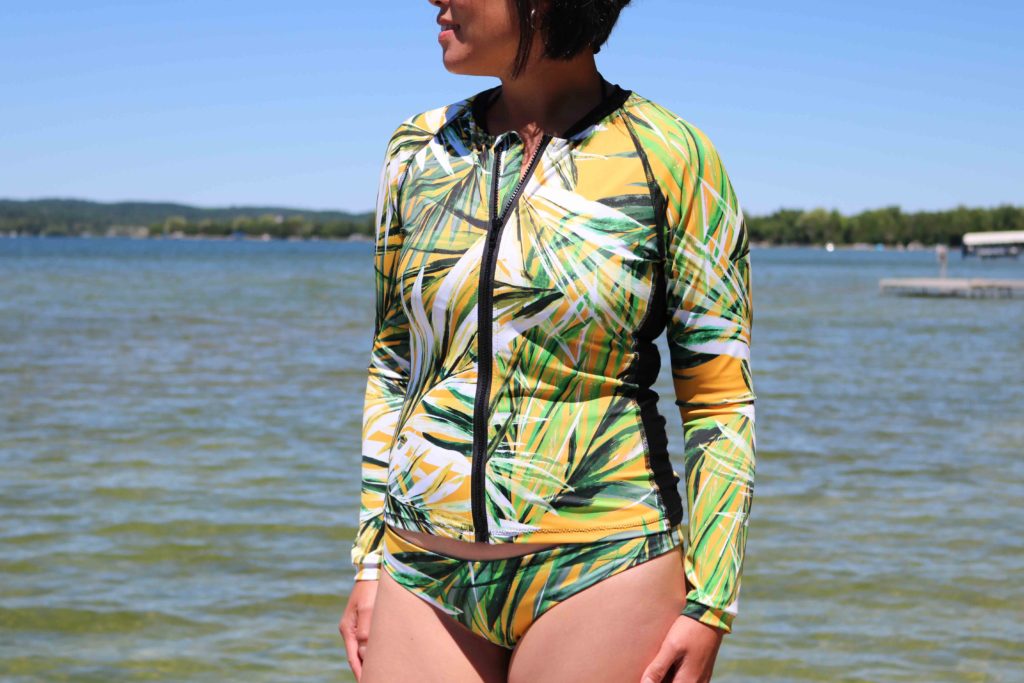
Earlier in the year, my oldest son needed a new rashguard, and was impressed when I saw a half-zip pullover style at a big box store. That zipper feature was so helpful and made it much easier to pull that wet top off his body. That’s when I thought I wanted one for myself! My boys love swimming and we are at the pool quite a bit nowadays and also spend a good bit of time at the family lake house. I can use it to cover up myself, save my skin from being in the sun so much, and even as a bit of wind protection when on a boat or wave runner.
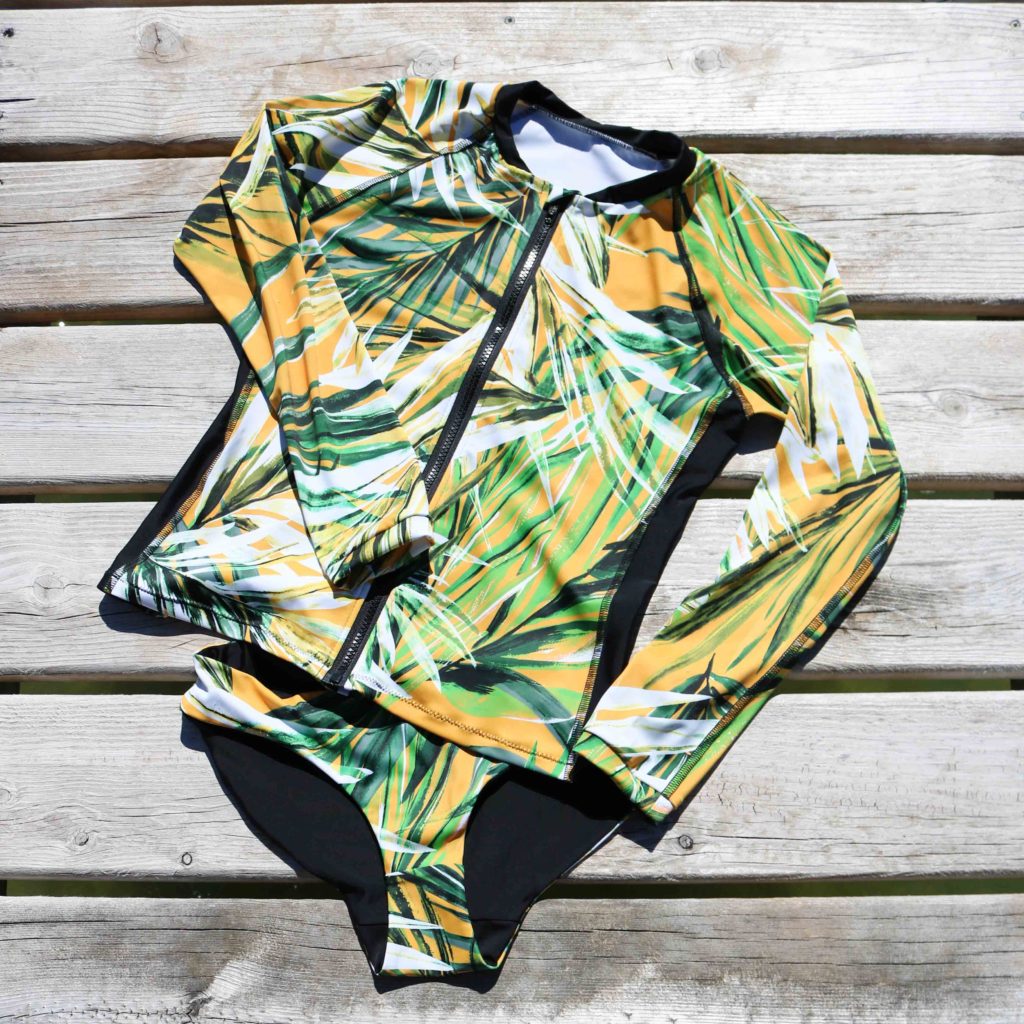
After doing a bit of research (thanks Instagram hashtags!) I found the Grace Swimsuit by Swimstyle. It wasn’t exactly what I wanted, but definitely the closest out there and I love the sporty look of the side panels and neckband. The pattern calls for an exposed zipper 3/4 the way down the front of the rashguard, but I hacked it so the zipper would go down all the way creating a jacket for easy removal. The bottoms were made with Acacia Underwear pattern by Megan Nielsen and hacked to be reversible.
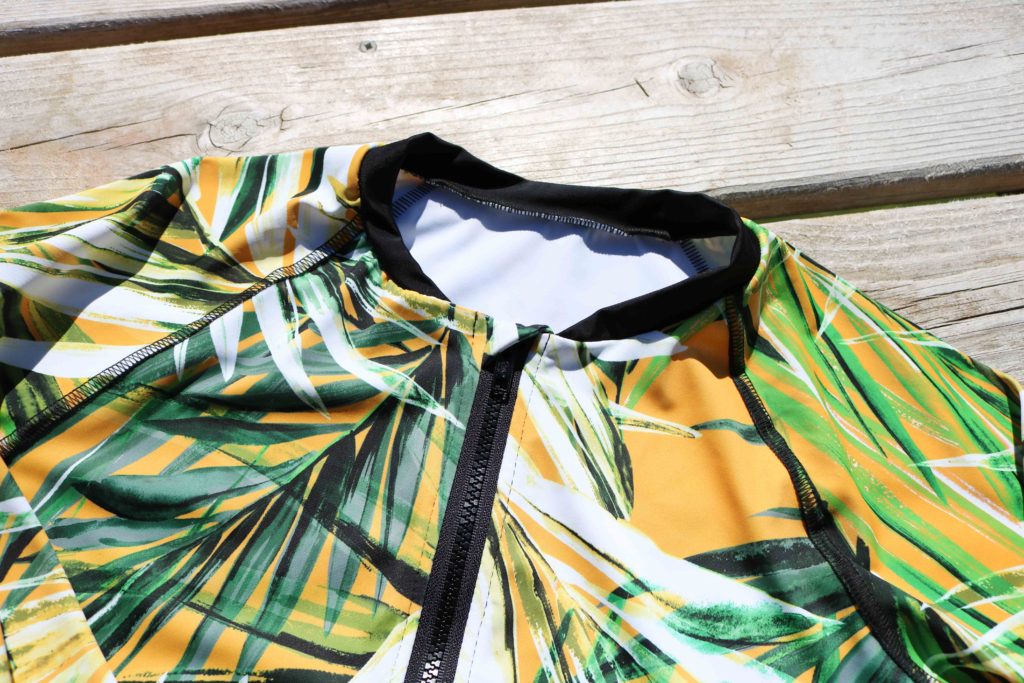
To make the Gracie into a full-zip rashguard, I added 1/4″ along the fold of the front pattern piece and then cut along that fold to create the two sides. I used an 18″ sport style plastic separating zipper and added a back placket so the zipper would not rub and possibly irritate my skin. You know I always like a good zipper cover, so I extended the placket to cover the zipper head and keep it secured.
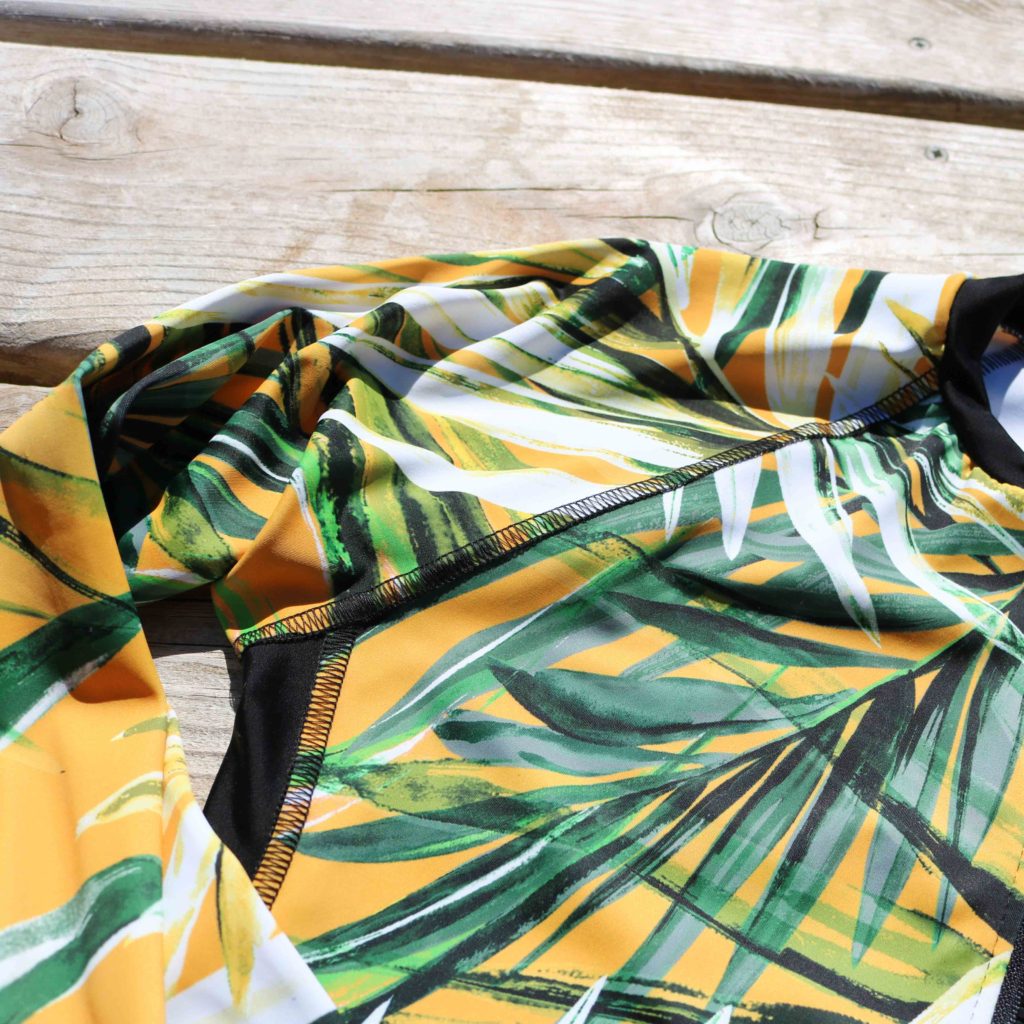
I do not have a coverstitch machine, so I used a combination of the flat-lock seam option of my serger along with the zig-zag capabilities of my old back-up machine. The raglan style sleeves made the flat-lock possible and I love the sporty look. The best part is there is no hanging interior seam to irritate the skin. All the seams are nice and flush against the body, making the rashguardd so incredibly comfortable. TIP: Use stretch needles in all of your machines when dealing with performance fabric.
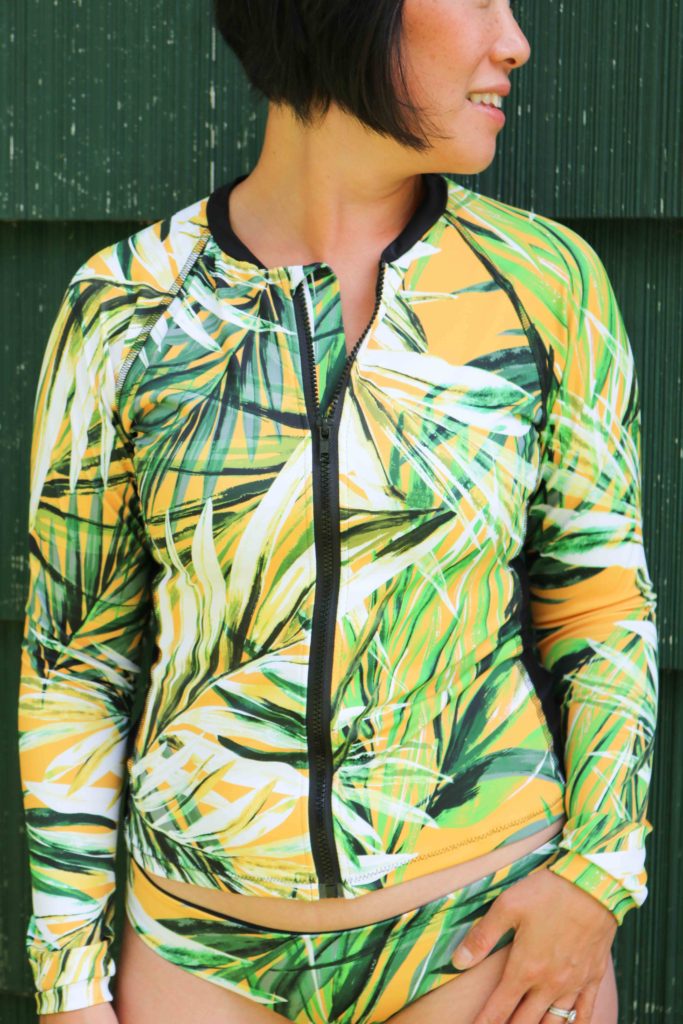 The neck and wristbands were all serged onto the rashguard but I used a simple sig-zag stitch around the hem and it has held up well. There has been a bit of tunneling after wear, so maybe a bit of knit stabilizer like this tape could help with that…but I’m okay with the hem as is!
The neck and wristbands were all serged onto the rashguard but I used a simple sig-zag stitch around the hem and it has held up well. There has been a bit of tunneling after wear, so maybe a bit of knit stabilizer like this tape could help with that…but I’m okay with the hem as is!

By making the bottoms reversible, I thought the light compression of the Spectrum Pro-Matte with UPF Protection along with the Viper Base Cloth would be enough and omitted the elastic as part of the pattern. With my wider hips, I definitely need a little extra hold right on the cheeks and need to make sure I add the elastic back in. The stretch around the waist and front leg is absolutely perfect though. Unfortunately, I didn’t have enough time to make another pair before our family trip to the lake, so guess what’s back on the sew list?!?
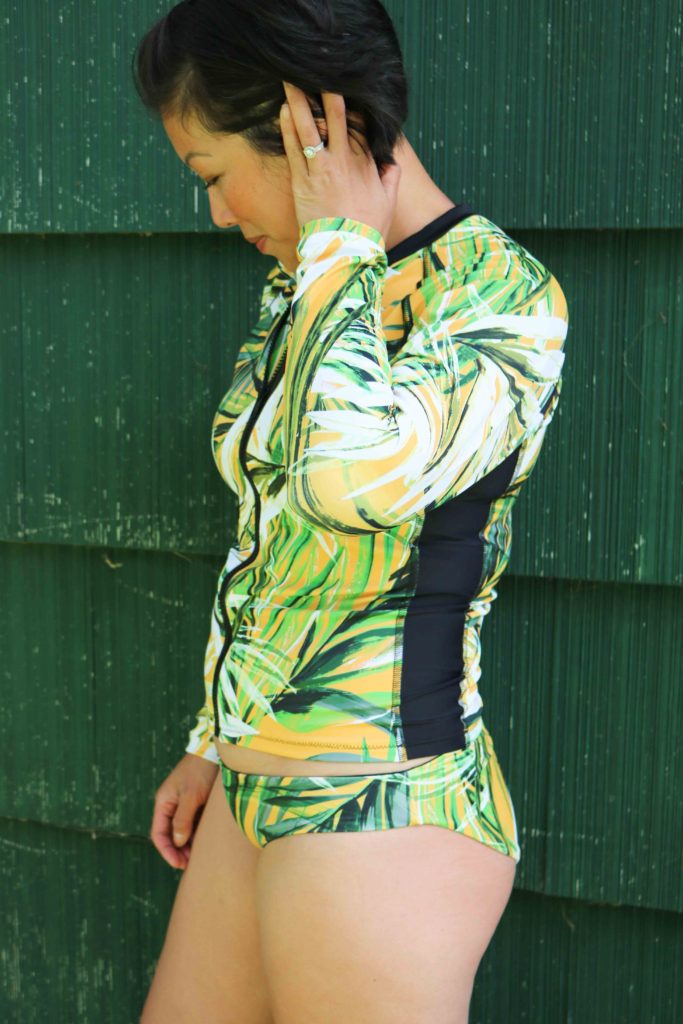
This suit is exactly what I wanted this summer and I can’t begin to tell you how creamy and luxurious these performance fabrics feel. They are so smooth….and that’s why I have three other garments made from Pine Crest fabrics! As of the date of publication, this fabric print is available for wholesale only, but you can head to Fabric.com to check out other available Pine Crest prints.

Lake Leelanau, MI
Project Stats:
- Fabrics – Digital Print MTB192 on Viper base cloth and Spectrum Pro Matte Tricot in black by Pine Crest Fabrics
- Rashguard pattern – Grace Swimsuit by Swimstyle
- Bottoms pattern – Acacia Underwear by Megan Nielson
- Needles – Schmetz Stretch 90/14
- Thread – Gutermann Toldi-Lock Overlock and All-Purpose Poly in Black
- Serger – Juki MO-2000QVP
- Sewing Machine – Singer Quantum Stylist
‘Hope you are enjoying your summer!!! Have you sewn up any special projects this season?
Happy Sewing Friends,
Cristy
Fabric was provided by Pine Crest Fabrics for this post. The swimwear project and all opinions are my very own. The post also contains affiliate links which help to keep this website ticking. Thank you always for your support.
